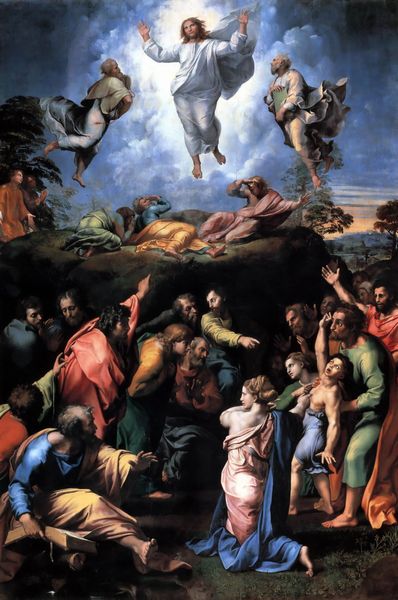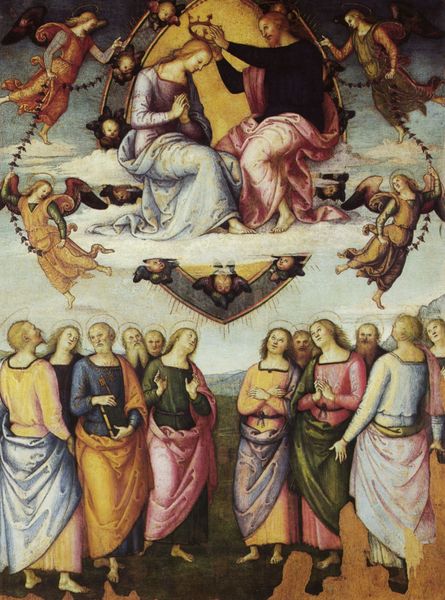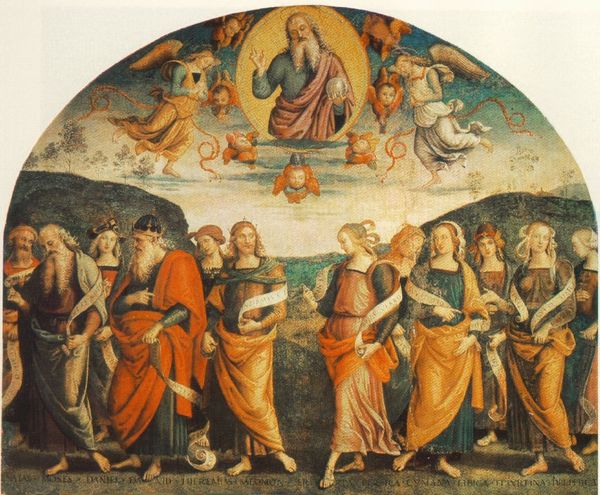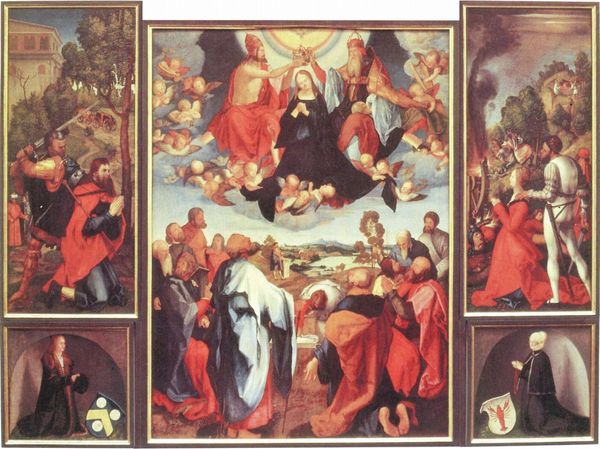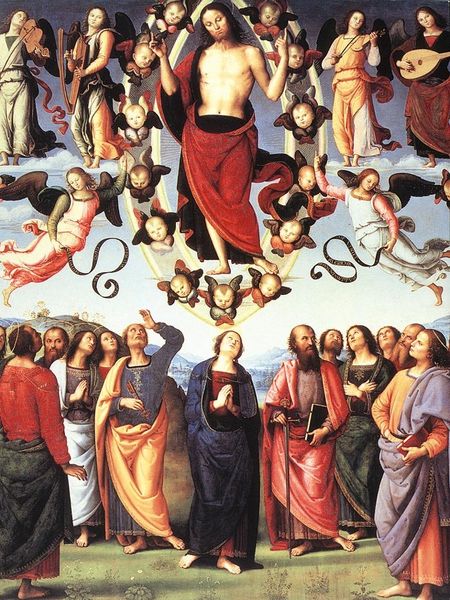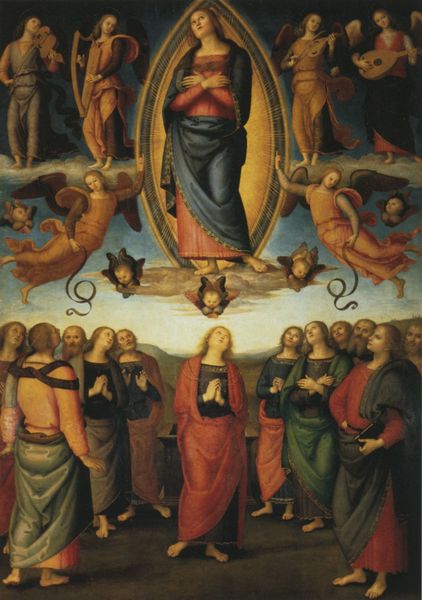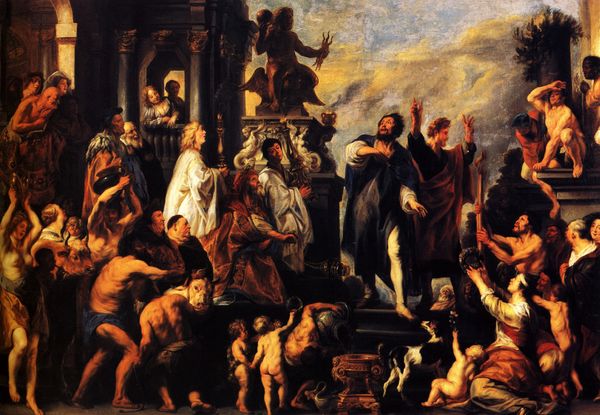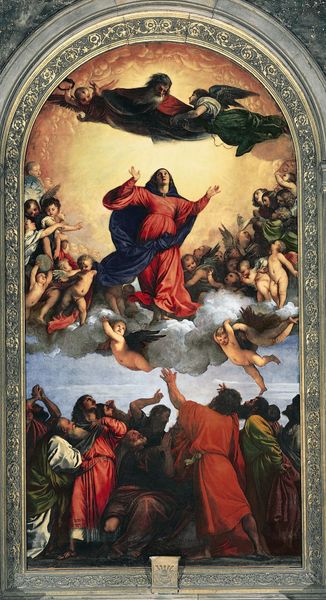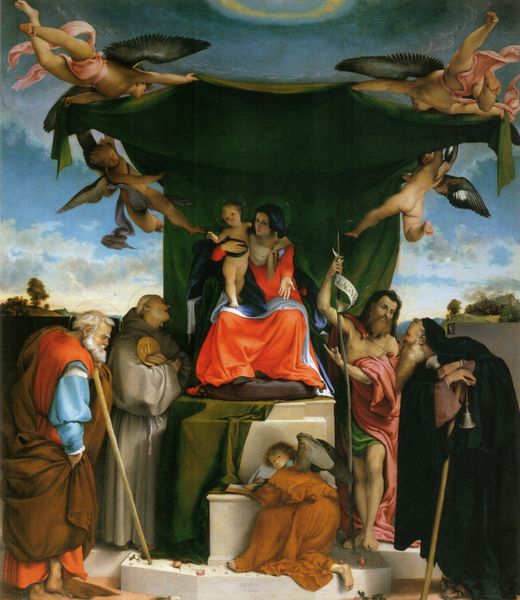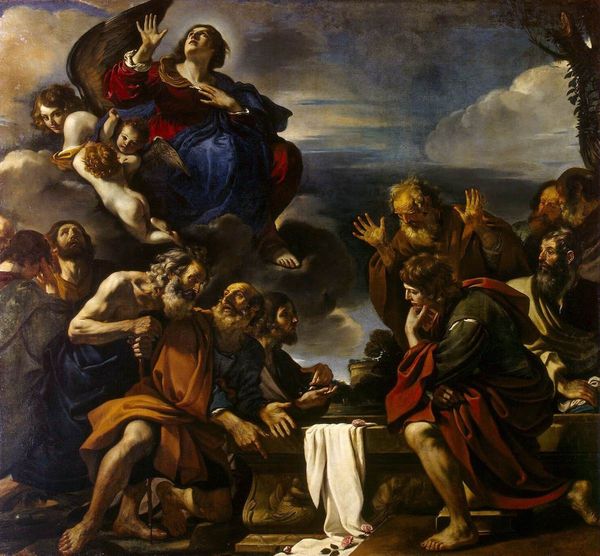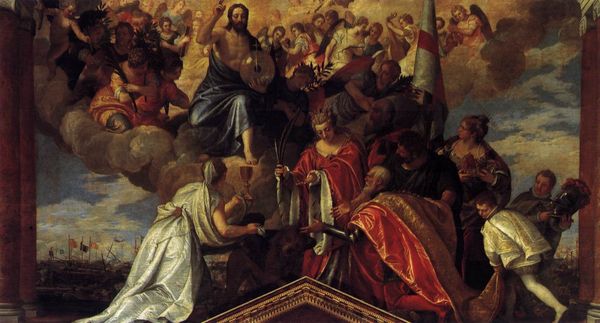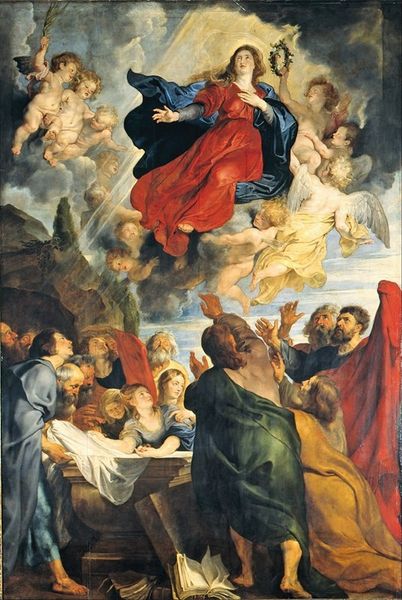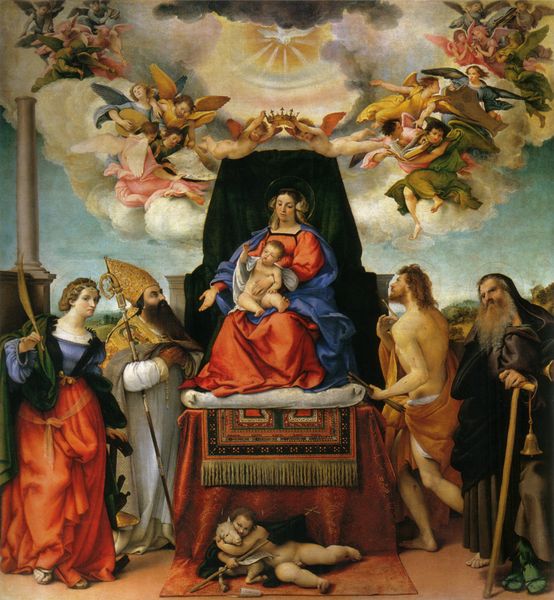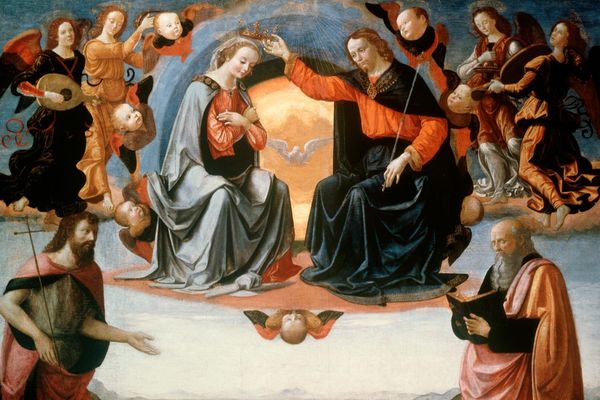
painting, oil-paint
#
portrait
#
venetian-painting
#
allegory
#
baroque
#
painting
#
oil-paint
#
oil painting
#
mythology
#
history-painting
#
portrait art
Copyright: Public domain
Editor: This oil painting is titled "Doge Reniero Zeno and the Endowment of the Crociferi" by Palma il Giovane. The overall effect is quite grand and theatrical with the figures in the clouds, and a solemnity suggested by the crowd on the ground. What symbolic meanings do you see embedded within it? Curator: This work is rich in cultural memory. Notice how Christ isn't merely above them, but actively presenting himself. He appears almost as the guarantor of Doge Zeno's legacy. Think of the floating cherubs – what do they traditionally represent? Editor: Innocence, divine blessing maybe? Curator: Precisely. They are timeless symbols of God's favor, suggesting divine approval of the Doge's endowment. And consider the very act of endowment – it's not simply about wealth, but the transfer of power and responsibility under the watchful eyes of heaven. Does that shift how you perceive the figures below? Editor: Definitely, they aren't just witnesses. It elevates the event to something cosmically significant, linking worldly power with spiritual authority. Curator: Yes. Consider how the composition uses light and shadow to differentiate between the earthly and divine realms. It tells a story about power, faith, and enduring cultural values. What are your impressions now, with all these in mind? Editor: I now see the work weaving the earthly and divine realms together, using these powerful symbols. Curator: And that's the beauty of it: we’re constantly deciphering layers of meaning inherited from centuries of symbolic language. Editor: I'm struck by how art can act as a cultural bridge connecting the past and the present through symbolic forms.
Comments
No comments
Be the first to comment and join the conversation on the ultimate creative platform.
